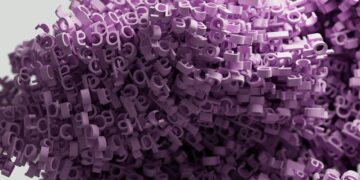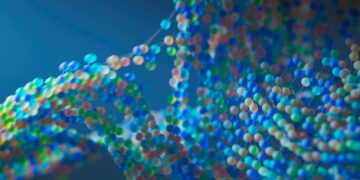The scorching embrace of summer, while often inviting, brings with it a critical health consideration: proper hydration. When temperatures soar, our bodies work harder to maintain a stable internal climate, primarily through sweating. This natural cooling mechanism, however, depletes our fluid reserves and essential electrolytes at an accelerated rate. Neglecting our body’s thirst signals, or simply underestimating our fluid needs, can swiftly lead to dehydration—a condition far more serious than mere discomfort. Understanding the profound impact of water on every bodily function, from regulating temperature to transporting vital nutrients, becomes paramount. This article delves into the physiological necessity of consistent fluid intake, explores the tell-tale signs of dehydration, and provides actionable strategies to ensure optimal hydration, especially when the mercury rises. Prioritizing proactive hydration isn’t just about feeling good; it’s fundamental to maintaining health and peak performance in challenging heat.
The physiological imperative of water
Water, comprising between 50% to 70% of an adult’s body weight, is not merely a thirst quencher; it is the fundamental medium for virtually all bodily processes. Its role in maintaining life is so pervasive that even a slight deficit can significantly impair our body’s intricate systems. Firstly, water is indispensable for thermoregulation. As external temperatures rise, our bodies release heat through perspiration. This sweat, primarily water, evaporates from the skin’s surface, carrying heat away and cooling us down. Without sufficient water, this vital cooling mechanism falters, leading to overheating and potentially dangerous heat-related illnesses.
Beyond temperature control, water acts as a universal solvent and transporter. It forms the basis of blood, which delivers oxygen and essential nutrients to every cell and tissue. Concurrently, it facilitates the removal of metabolic waste products, allowing the kidneys to filter toxins efficiently and excrete them via urine. Water also lubricates our joints, cushions organs and tissues, and maintains the structure of cells. From nerve impulse transmission to muscle contractions, every biological function relies on adequate hydration. When the body faces a fluid deficit, it prioritizes essential functions, potentially compromising less critical, but still important, processes, leading to fatigue, reduced cognitive function, and decreased physical performance.
Recognizing the subtle signs of dehydration
Understanding the signs of dehydration is crucial for timely intervention, as symptoms can range from mild discomfort to life-threatening emergencies. The body often provides early warnings, which, if heeded, can prevent a more severe state. At its mildest stage, dehydration typically manifests as increased thirst and a dry mouth. Urine may become darker than usual, indicating concentration, and its output might decrease. Other early indicators include fatigue, lightheadedness, and a mild headache. These symptoms are the body’s way of signaling a need for fluids, often when as little as 1-2% of body weight has been lost in fluid.
As dehydration progresses to a moderate level, the symptoms intensify. Individuals may experience significant dizziness, muscle cramps, persistent headaches, and an accelerated heart rate. The skin might lose its elasticity and appear flushed. Mental clarity can diminish, leading to irritability or confusion. Severe dehydration, however, is a medical emergency that requires immediate attention. It presents with extreme thirst, a lack of urine output, sunken eyes, very low blood pressure, a rapid and weak pulse, and potentially loss of consciousness. Recognizing these escalating signs is paramount for personal safety and knowing when to seek professional medical help. A simple way to self-monitor hydration is by observing urine color, with pale yellow indicating good hydration and darker shades suggesting a need for fluids.
| Dehydration stage | Common symptoms | Recommended action |
|---|---|---|
| Mild (1-2% body weight fluid loss) | Thirst, dry mouth, slightly darker urine, fatigue, headache. | Increase fluid intake (water, electrolyte drinks). |
| Moderate (3-5% body weight fluid loss) | Increased thirst, significant fatigue, dizziness, muscle cramps, reduced urination, rapid pulse, flushed skin. | Aggressive fluid intake, consider oral rehydration salts, seek medical advice if symptoms persist. |
| Severe (>5% body weight fluid loss) | Extreme thirst, no urine, sunken eyes, rapid/weak pulse, low blood pressure, disorientation, loss of consciousness. | Immediate medical emergency. Call emergency services. |
Strategic hydration for hot climates
In hot climates, adopting a strategic approach to hydration is far more effective than simply reacting to thirst. The key principle is proactive drinking. Do not wait for thirst to strike, as thirst is already an indicator of mild dehydration. Instead, aim to consume fluids consistently throughout the day, even when not actively feeling thirsty. Establishing a regular drinking schedule can be helpful, for instance, a glass of water every hour or two. The total amount of fluid required varies significantly based on individual factors such as activity level, body size, metabolism, and the specific environmental conditions. While general guidelines often suggest eight glasses of water daily, someone exercising vigorously in high heat will undoubtedly need much more.
The type of fluid consumed also plays a vital role. Plain water remains the best choice for everyday hydration. However, certain beverages should be consumed in moderation or avoided, particularly in hot conditions. Sugary drinks, like sodas and fruit juices, can exacerbate dehydration due to their high sugar content, which draws water into the digestive tract. Excessive caffeine and alcohol act as diuretics, increasing urine production and leading to further fluid loss. Alongside beverages, incorporating water-rich foods such as fruits (watermelon, oranges, berries) and vegetables (cucumbers, celery, lettuce) can contribute significantly to daily fluid intake. Timing is also critical: drink fluids before, during, and after any physical activity or prolonged exposure to heat, ensuring your body has a sufficient reservoir to manage increased fluid loss.
Beyond water: Electrolytes and their role
While water is the cornerstone of hydration, in certain situations, it may not be sufficient on its own. This is where electrolytes come into play. Electrolytes are minerals that carry an electric charge when dissolved in body fluids, such as sodium, potassium, chloride, magnesium, and calcium. They are crucial for a multitude of bodily functions, including regulating nerve and muscle function, maintaining the body’s fluid balance, supporting blood pressure, and helping rebuild damaged tissue.
During periods of intense sweating, especially in hot and humid conditions or during prolonged physical activity, the body loses not just water but also significant amounts of these vital electrolytes. If only plain water is replenished without restoring electrolytes, it can dilute the remaining electrolytes in the body, potentially leading to a dangerous condition called hyponatremia (low sodium levels), which can cause swelling of the brain, seizures, and even coma. For casual hydration, electrolytes are typically replenished through a balanced diet rich in fruits, vegetables, and whole grains. However, for athletes, individuals engaged in heavy labor in the heat, or those recovering from illness involving vomiting or diarrhea, supplementing with electrolyte-rich beverages like sports drinks (consumed judiciously due to sugar content), oral rehydration solutions, or natural sources like coconut water and broths becomes essential to restore the body’s delicate mineral balance and prevent adverse health outcomes.
In summary, maintaining optimal hydration, particularly in challenging high temperatures, transcends simple comfort; it is a fundamental pillar of health and well-being. We’ve explored water’s indispensable roles, from regulating core body temperature and facilitating nutrient transport to enabling proper organ function and waste elimination. Crucially, recognizing the early indicators of dehydration – from subtle thirst and fatigue to more severe symptoms – empowers us to take timely corrective action, preventing a decline into dangerous states. Strategic, proactive fluid intake, well before thirst signals appear, coupled with smart beverage choices, forms the bedrock of effective hydration. Furthermore, understanding the vital contribution of electrolytes, especially during periods of significant fluid loss, ensures a balanced approach. By embracing these principles, we not only safeguard our health but also enhance our physical and cognitive performance, even when the heat is unrelenting. Make conscious hydration a daily priority, not merely a reaction to thirst, for a resilient and thriving body.


















